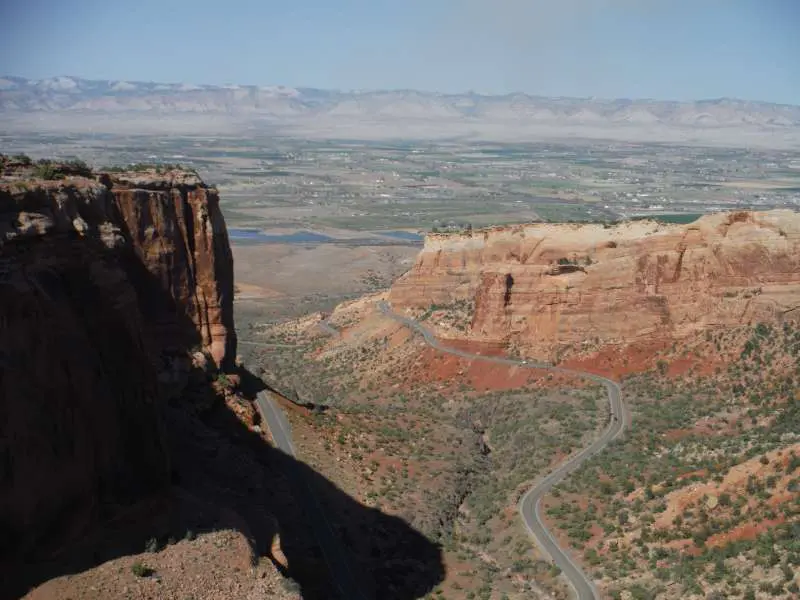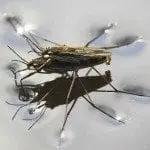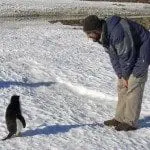
I drew in a sharp breath and held on tightly as we suddenly rounded a narrow curve and I got a good look down the steep edge at the spectacular, sharp rocks far below us. The chilly wind rushed through the open car window, playing with my hair as I tried to capture the ornate landscape at Colorado National Monument near Grand Junction, on the western side of the state. While traveling in Colorado several weeks ago, I enjoyed getting to see some especially magnificent geology, including towering mountains, balanced boulders, tilted layers, dramatic cliffs, quiet valleys, climbing canyons, and serene lakes.
The Monument was one of the most interesting places we got to see. The main scenic drive spirals dramatically up through the beautiful network of canyons, displaying a plethora of interesting rock formations. There are a few different theories of how these formations got there. Because of the relative sequence of rock layers and the historical account of the global flood in the Bible (many cultures around the world have legends of a great flood like this), I believe pretty much all of the layers exposed here were deposited during this flood. How some of the canyons got carved and other structures formed is definitely more ambiguous. There’s some pretty convincing evidence that this area was part of a large lake that formed at the end of and shortly after the flood, which later broke through its dam and catastrophically drained.

I enjoyed seeing the cross-bedded sections of sandstone up close. These features are best explained as being formed during the global flood mentioned in the Bible. Many geologists would tell you that these cross-bedded layers, with their zigzagged, lens-shaped patterns were formed by sand dunes as they migrated. They would say that these sand dunes formed because the Western United States was once covered by a vast “erg” – that is, a large region covered in deep, pure sand, like the Sahara Desert.
Yet, cross-bedding like this can also be caused by sandbars and waves under water. One of the main differences we can observe between desert and underwater cross-bedding today is that desert cross beds tend to be

significantly larger. Taking into account the catastrophic global flood,
underwater cross-bedding significantly larger than we see today would not be very surprising at all. The rock formation between two of these theoretically erg-formed cross-bedded formations also shows cross-bedding, but is considered to be formed from underwater dunes. This would mean there were dry sand dunes, then a lake, then sand dunes again after that, all in the same place. I think it makes more sense to interpret all three cross-bedded formations as having formed underwater during the global flood.
Read more about Colorado geology and the amazing Colorado National Monument in our “Clue of the Week” next week!
Copyright Sara J. Bruegel, 2015. Used with permission
References:
Lanny Johnson. Alpha Omega Institute. Private presentation for Bruegel wedding, April 3rd, 2015 in Fruita, Colorado.
Annabelle Foos. Geology of Colorado National Monument. 1999. University of Akron Geology Department. http://www2.nature.nps.gov/geology/education/foos/colm.pdf
D. L. Baars and G. M. Stevenson. Tectonic Evolution of Western Colorado and Eastern Utah. 1981. New Mexico Geological Society https://nmgs.nmt.edu/publications/guidebooks/downloads/32/32_p0105_p0112.pdf
Brian Thomas. Do Sand-Dune Sandstones Disprove Noah’s Flood? . Acts & Facts. 43(9). 2014. Institute for Creation Research. http://www.icr.org/article/8231
Steve Austin. Grand Canyon: Monument to Catastrophe, pg. 92-98, 103-104. 1994. Institute for Creation Research







I have a creationist text that I would be happy to share. I am the Michael Shaver who has articles in the Creation Research Society Quarterly on Colorado National Monument and Unaweep Canyon. It’s too voluminous for e-mail but I’d be glad to mail you a copy. Are you aware of Alpha Omega in Grand Junction? They do speaking on young earth creation evidences (Dave and Mary Jo Nutting). It’s always good to hear of other people with an interest in this.
Send me your mail address and I’ll send you the text.
Hello Michael – thanks for contacting me. I would love to read your article on this place. I’ll take all the technical journal articles I can get. I will send you an email. Yes! I know the Nuttings – I enjoyed talking with them briefly while I was there. Wish I had been able to talk with them more, but our time there was tightly scheduled because of a family wedding. Blessings!